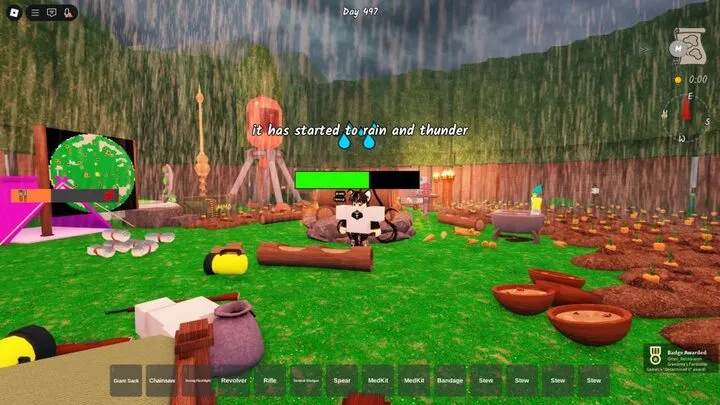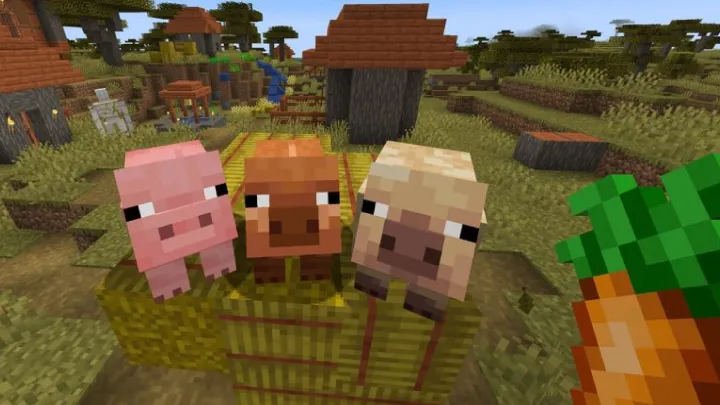Introduction
99 Nights in the Forest is an immersive survival adventure game that challenges players to endure harsh environments, scarce resources, and unknown dangers over the span of ninety-nine in-game nights. Unlike many survival titles that allow quick progression, this game emphasizes long-term planning, patience, and adaptability. Each night brings new challenges—from dwindling food supplies to unpredictable weather patterns and hostile encounters.
This guide provides a deep dive into every stage of your survival journey. Whether you are stepping into the forest for the first time or already struggling around night fifty, these strategies will help you make the most of your resources, build reliable shelters, and prepare for the unknown threats lurking in the dark.
1. The First Night: Establishing Your Base
The first night is crucial. You begin with limited supplies and no established shelter, making quick decisions vital. The game encourages you to locate safe ground before darkness falls.
Find a clearing with access to fresh water and resources like wood and stone. Avoid valleys where flooding can occur. Build a basic fire and temporary lean-to shelter using gathered branches. The fire not only provides warmth but also keeps wildlife at bay.
 Beginner’s Checklist
Beginner’s Checklist
- Gather sticks, rocks, and plant fibers within daylight hours.
- Construct a temporary shelter close to water but not directly on the riverbank.
- Light your first fire before dusk.
Surviving the first night sets the foundation for everything that follows.
2. Resource Gathering and Crafting Tools
Once you survive night one, the next step is securing sustainable resources. Raw gathering is slow and inefficient without tools, so crafting basic gear should be your priority.
Essential Early Tools
- Stone Axe: For chopping wood efficiently.
- Spear: Useful for both hunting and defense.
- Torch: Critical for nighttime exploration.
Crafting mechanics encourage resource management. Hoard too many logs and you’ll be over-encumbered, but skimping means falling behind. Focus on versatile tools first before expanding your inventory.
3. Building Permanent Shelter
Temporary shelters won’t last through storms or predator attacks. By night five, aim to establish a more permanent structure.
Shelter Types
- Log Cabin: Durable and warm but resource-heavy.
- Treehouse: Elevated safety from ground predators, but harder to defend.
- Stone Hut: Strong against weather, though construction is slower.
Your shelter should include storage areas, crafting stations, and a fire pit. Treat it as your headquarters—it’s where you’ll return after each expedition.
4. Hunting, Fishing, and Foraging
Food management is one of the biggest challenges in 99 Nights in the Forest. Starvation lowers stamina and makes survival impossible.
Hunting
Craft bows or spears for reliable hunting. Small game like rabbits and birds respawn quickly, but larger animals provide greater sustenance.
Fishing
A simple spear or fishing rod can feed you consistently if you build near a river or lake.
Foraging
Berries, mushrooms, and roots supplement your diet. Learn which mushrooms are edible and which are poisonous.
Diversifying your food sources ensures stability in the long run.
5. Fire, Warmth, and Weather Survival
Cold nights and storms are as deadly as predators. Fire management is a central mechanic that demands both preparation and efficiency.

Fire Management Tips
- Stockpile wood during the day; nighttime gathering is risky.
- Build backup fire pits in different parts of the forest.
- Craft clothing from animal hides to reduce fire dependency.
Surviving harsh winters requires layering strategies: proper shelter, consistent fire, and protective gear.
6. Defense and Combat Strategies
The forest isn’t empty. Wolves, bears, and mysterious hostile entities emerge as the nights progress. Surviving combat requires preparation and tactical awareness.
Combat Essentials
- Always carry a spear for reach.
- Use traps to weaken larger beasts.
- Craft bows for ranged safety.
Avoid unnecessary fights. Not every enemy needs to be confronted. Sometimes retreating is the best survival strategy.
7. Exploration and Mapping
The forest is vast, with hidden caves, ruins, and resource nodes. Mapping your surroundings prevents you from getting lost and unlocks valuable secrets.
Exploration Tips
- Mark landmarks with crafted signs or torches.
- Explore during mornings when visibility is highest.
- Keep a mental map of rivers, cliffs, and resource zones.
Exploration is rewarding but risky—always return to base before nightfall unless you’re fully prepared.
8. Nighttime Challenges and Adaptation
As nights progress, the forest becomes more hostile. Around night 20, new predators appear. By night 50, supernatural entities begin hunting you.
Adapting to Night Phases
- Nights 1–20: Focus on shelter and food.
- Nights 21–50: Build advanced weapons and expand territory.
- Nights 51–99: Expect relentless attacks; fortify your base.
Each phase escalates intensity, forcing you to evolve your strategies or face defeat.
9. Advanced Crafting and Survival Gear
Late-game survival relies on advanced crafting. Unlocking recipes for armor, traps, and durable tools shifts the balance in your favor.
Must-Have Late-Game Gear
- Metal Axe & Pickaxe: Faster gathering efficiency.
- Composite Bow: High damage from a distance.
- Fortified Walls: Defense against large predator attacks.
Advanced crafting makes the difference between surviving comfortably and barely scraping by.
10. Preparing for the Final Nights
The last stretch of the game is designed as the ultimate test. Nights 90–99 combine extreme weather, relentless predators, and scarce resources.

Final Preparation Checklist
- Fully stocked food and water reserves.
- Reinforced shelter with multiple layers of defense.
- Crafted best-in-class gear and spare weapons.
- Backup fire pits and torches spread across key zones.
The goal is endurance. By pacing yourself and managing reserves wisely, you can survive all 99 nights and claim victory.
Conclusion
99 Nights in the Forest is more than just a survival challenge—it’s a test of patience, planning, and adaptability. From your first fragile shelter to the climactic final nights, every decision shapes your path to survival. The thrill lies not only in fighting enemies but in learning to live in harmony with the forest, managing resources carefully, and adapting to each new threat.
Mastering these tips ensures you won’t just survive—you’ll thrive across all ninety-nine nights.

















